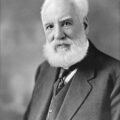
9 Quintessential Scottish Traditions
I’m writing this article from a little village in Scotland’s central highlands, within the Cairngoram National Park. I’m in the midst of my third pet sitting assignment in Scotland, here taking care of two beautiful black Labrador Retrievers.
Thus far I’ve been traveling around Scotland for an entire month, doing pet sitting! And I still have three more weeks to go. Yeah!
During my travels thus far I’ve come across all the following quintessential Scottish things. Many of them are the essential things that come to mind for most people when they think about Scotland. But others are things I discovered by being here, seeing and experiencing the country.
I’ve done additional research to learn more intriguing facts about these very Scottish ‘institutions’. Without further ado, here’s what I’ve learned and observed about Scotland…
1. Golf
At the risk of sounding ignorant, I readily admit that I did not know golf originated in Scotland. Is that something ‘everyone’ knows? Am I the odd one out? Or is this news to you, too?
I first learned that golf comes from Scotland recently, while pre-researching about the country I was about to explore. But when I arrived in Scotland, it become crystal clear that golf is a big thing here. In fact, as soon as I landed at Edinburgh airport in mid-April, I saw many huge, bulky bags rolling around the luggage belt, which I soon figured out were travel bags for golf clubs.
Since then, I’ve seen dozens of golf courses around Scotland. In the suburbs of Edinburgh, during my four-hour bus trip to the north, and now in the little town of Nairn. Scotland certainly has the ideal topography for golf: vast undulating open fields.
On further research into the origins of golf, I learned many intriguing facts:
The game originated in the 1400s along the east coast of Scotland, in the vicinity of royal properties. It was played by upper class gentlemen who would hit pebbles over sand dunes, using long sticks. The game became exceedingly popular.
Eventually, golf was officially endorsed by King James IV of Scotland in 1502, who became the world’s first royal golf player. After that, the game spread by the royal houses through Europe and England. King Charles I took the game to England. Mary Queen of Scots introduced it in France, and so on.
In 1744 golf became an official sport when the Gentlemen Golfers of Leith, Scotland built a golf club house, established official playing rules and started annual competitions with prizes. The golf club in the historic east coast town of St Andrews soon followed with competitions in 1754.
The St Andrews club then designed and built the world’s first 18-hole golf course in 1764. It is the world standard for courses and was declared a ‘Royal and Ancient’ course in 1834 by King Charles, which lead it to become the world’s top premier golf club, officially titled, the Royal and Ancient Golf Club of St Andrews.
During British colonial expansion in the 1800s, golf further spread throughout the world into India, South Africa and other British strongholds.

2. Bagpipes & bagpipe music
I’m pretty sure everyone knows that bagpipes are quintessentially Scottish. In fact, this might be one of the first things that pops into people’s heads when they think of Scotland. More specifically, nowadays Scottish bagpipes and their music are associated with the Scottish highlands.
However, as it turns out, scholars disagree on where bagpipes actually originated from, as bagpipes and bagpipe-like instruments historically were played all over the world.There are over 130 different types of bagpipe-like instruments!
Many scholars believe bagpipes originated in ancient Egypt! Others believe they came from India, or from the Middle East, or from ancient Scots tribes who migrated from Ireland, or from invading Roman forces, or from various European countries. Several different languages have names for bagpipes, so clearly they existed in many different cultures historically.
In any event, today bagpipes are most readily found, heard and played in Scotland. During my first week in Edinburgh, I got to listen to a bagpiper out on the streets near Edinburgh Castle. And that really made me feel like I was in Scotland!

3. Kilts
Kilts are another quintessential Scottish tradition that probably everyone associates with Scotland, along with bagpipes. Kilts, though, did actually originate in Scotland.
Historically, Scot men concluded that kilts were the best protective garment to wear in Scotland’s cold wet weather (although I don’t really understand why pants would not provide better protection?). Kilts also provide great ease of movement for their many outdoor pursuits like fishing, hunting and golfing.
Kilts have been worn in Scotland at least since the 1600s. Its current form is attributed to Thomas Rowlinson, who employed highlanders to work in his furnaces. Traditionally, kilts are worn with nothing underneath. Kilts are a symbol of Scottish pride and tradition.
4. Plaids and Tartans
Hand in hand with kilts are the various plaid fabrics from which they’re made.
To be honest, I wasn’t really sure of the difference between ‘plaid’ and ‘tartan’. So I looked it up. Turns out, it’s a bit complicated and there are overlapping uses of the terms.
First off, Americans tend to call these patterns ‘plaid’, while Scots call them ‘tartan’. So it’s primarily a difference in English usage. However, ‘plaid’ refers to all types and varieties of these checked patterns, but ‘tartan’ is a specific plaid pattern.
Tartans feature uniformly spaced lines both vertically and horizontally, forming squares. Other plaid patterns may have lines at different distances and widths, forming rectangles and/or more complex patterns.
In Scotland, there are many, many different tartan patterns and colors. There are ‘ancient’, ‘modern’, ‘dress’, ‘weathered’ and ‘hunting’ tartans, among others. In 2008, the Scottish Parliament established the Scottish Register of Tartans so that all tartans must be approved and registered. Each tartan has a unique thread count, pattern, colors and a specific name. The patterns and color schemes are surprisingly complicated. Amazingly, there are already over 7000 unique tartans registered!
In Scotland, tartan fabrics are used not only for kilts, but for other types of clothing, hats and caps, scarves, blankets, handbags and so on.

Tweed
Tweed is another fabric that originated in Scotland. It is a thick, sturdy textured fabric made of wool. Usually some sort of pattern is woven into the fabric, though not necessarily with any color combinations. Many tweeds are a solid color with a textured pattern, such as Herringbone Tweed. These thick fabrics are know for warmth and durability, especially useful for coats, jackets, cold-weather caps and men’s suits.
Genuine Harris Tweed is a famous Scottish tweed of extremely high quality, which can only be made in Scotland’s westernmost islands, called the Outer Hebrides. Harris Tweeds are hand dyed and hand woven in particular traditional weave patterns and only from virgin wool. These world-renowned fabrics are actually protected by the Scottish Parliament!

6. Whiskey
Whiskey lovers probably know that this strong spirit originated in Scotland. But did you know that whisky is Scotland’s national drink?
Whisky has been distilled in Scotland for hundreds of years, going back at least to the 1400s. Today there are more than 100 distilleries around the country. Many of them offer distillery tours to visitors.
Johnny Walker, arguably the world’s most famous whiskey, comes from Scotland. But many other famous whiskey labels also come from Scotland, including Ballantine’s, Bell’s, Chivas Regal, Cutty Sark, Dewar’s, Glenfiddich, Grant’s, J&B, Teacher’s Highland Cream, The Famous Grouse, Vat 69, Whyte and Mackay and William Lawson’s
Scotch Whisky, not surprisingly, is a whisky specifically from Scotland. There are single malt and blended whisky’s among other types. The most popular blended whisky in Scotland is called The Famous Grouse, which is also the best selling whisky in the country, ever since 1980. The most popular single malt whisky in the country is Glenfiddich.

7. Scottish Shortbread
I don’t know about you, but I’ve known about Scottish Shortbread since I was a kid. What a delicious, super-rich buttery cookie! One of my favorites, in fact, after anything chocolate. Shortbread is packaged in the ideal super-Scottish packaging with red plaid.
Alas, I rarely eat shortbread any more, due to its very rich buttery (read super fattening) constitution. While I’m in Scotland, though, I might have to break down and eat at least one or two some time. Anyone else here who loves shortbread?

8. Beige stone buildings
One of the first things I noted about Edinburgh is that the city is packed full of historic beige stone buildings. They are literally everywhere and used for every type of structure – homes, churches, government buildings, stores, schools, castles and manor homes. You name it and it’s probably constructed of beige stone.
I soon discovered that beige stone is not just characteristic of Edinburgh, but of all the towns and cities of Scotland. I recently came to the small town of Nairn on Scotland’s north coast. Lo and behold, more beige stone.
I’ve been told that in Nairn red sandstone is used to build everything, so it’s a different type of stone used than in Edinburgh, but the visual affect is the same: beautiful, solid beige stone buildings.

9. Plentiful green foliage
I first spotted Scotland’s overwhelmingly deep green foliage from my plane as we flew into Edinburgh. Vast rolling green fields, tons of fluffy green trees, thick bushes and hedges.
On the ground, I was soon pleased to note that Edinburgh city is filled with greenery – vast parks, huge green hills, landscaped gardens, rolling golf courses, pretty forests and plenty of trees and bushes on city streets, neighborhoods and individual homes.
Crossing the country by bus from Edinburgh up north to Nairn, I spend the entire trip passing through greenery: agricultural fields, cow and sheep pastures, rich forests, golf courses and little towns full of vegetation.

Summary
I hope you enjoyed learning these interesting details about Scotland’s iconic culture and history as much as I did. Stayed tuned for more about my travel adventures around Scotland!
=================================
You might also enjoy:
20 Famous People from Scotland
My First Observations of Scotland
My First Observations of Edinburgh
==================================












 Hi! I'm Lash, an American nomadic world traveler who's been traveling solo since 1998. I’m passionate about traveling the world nomadically and then sharing it all with you. I hope to inspire you to travel the world, to entertain you with tales from the road, and to help you reach your travel dreams. Welcome!
Hi! I'm Lash, an American nomadic world traveler who's been traveling solo since 1998. I’m passionate about traveling the world nomadically and then sharing it all with you. I hope to inspire you to travel the world, to entertain you with tales from the road, and to help you reach your travel dreams. Welcome! 




2 pings
Ten Unusual English Words in Common Use in Scotland - LashWorldTour
2024/05/29 at 5:18 pm (UTC 8) Link to this comment
[…] « 9 Quintessential Scottish Traditions […]
11 Things Ireland is Famous For - LashWorldTour
2024/12/17 at 11:07 pm (UTC 8) Link to this comment
[…] 9 Quintessential Scottish Traditions================================ […]